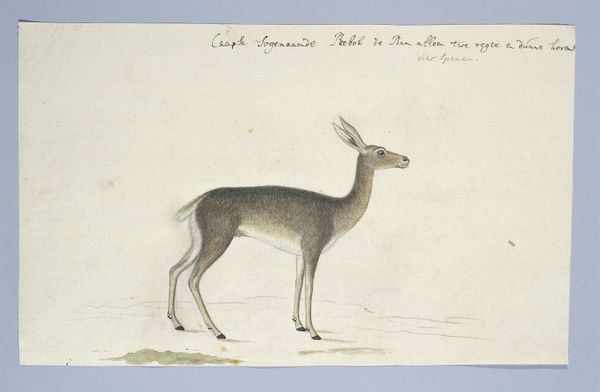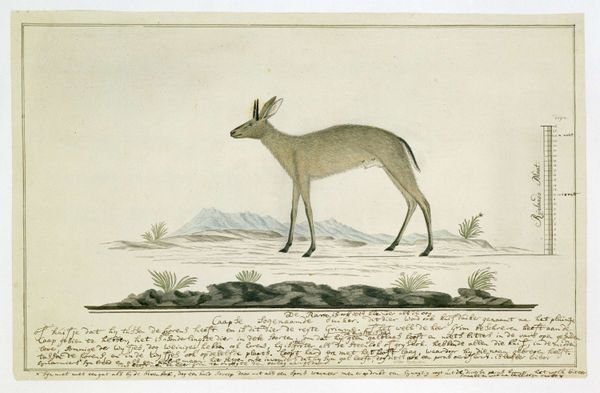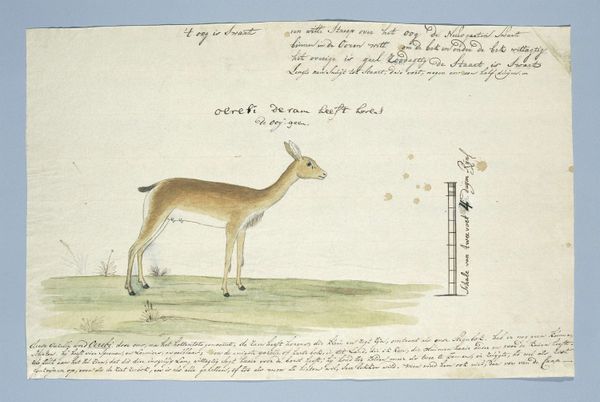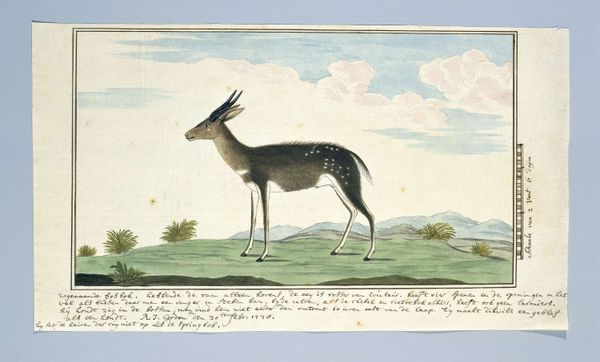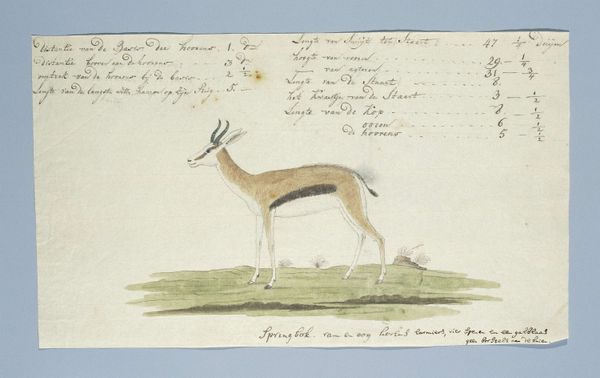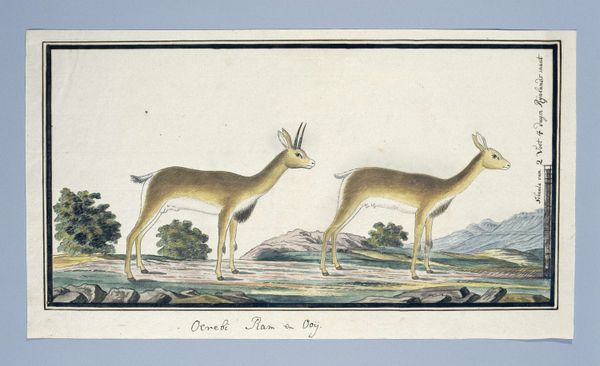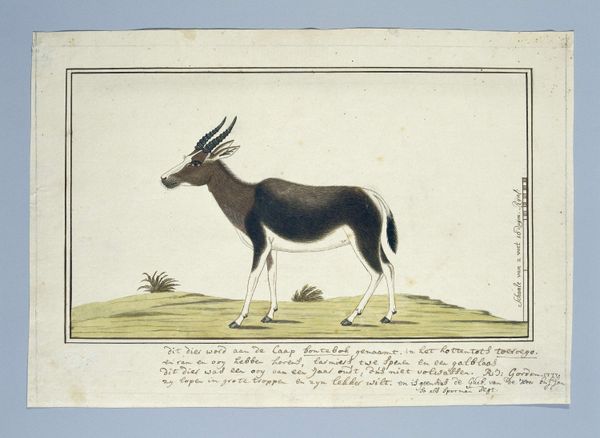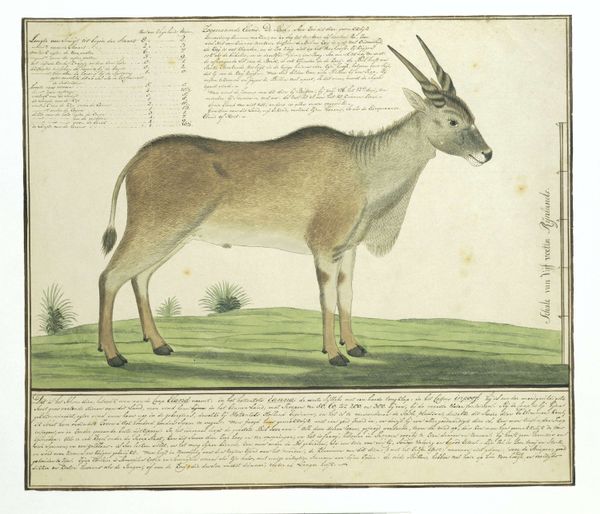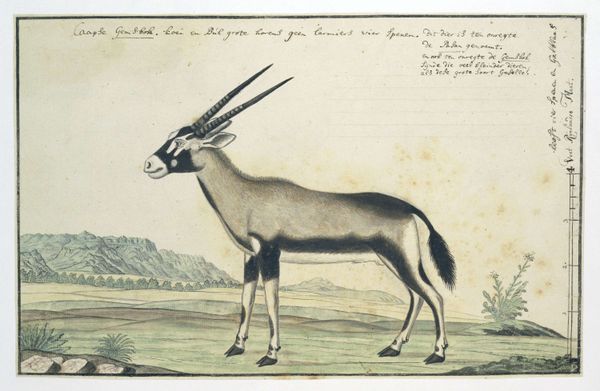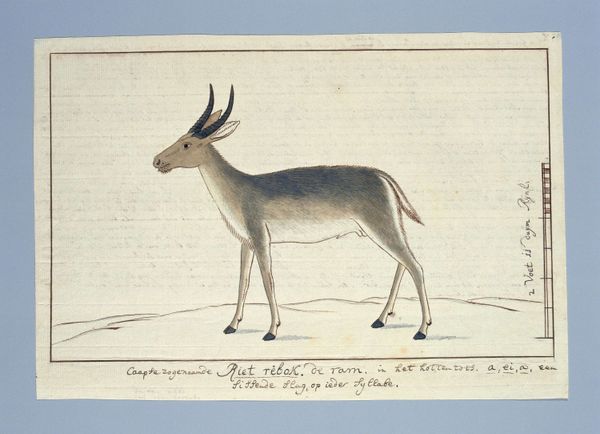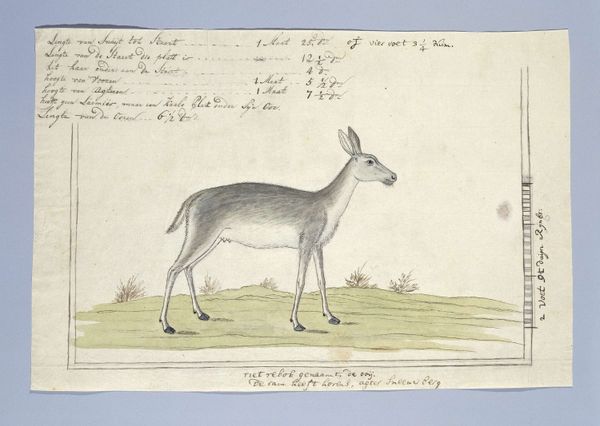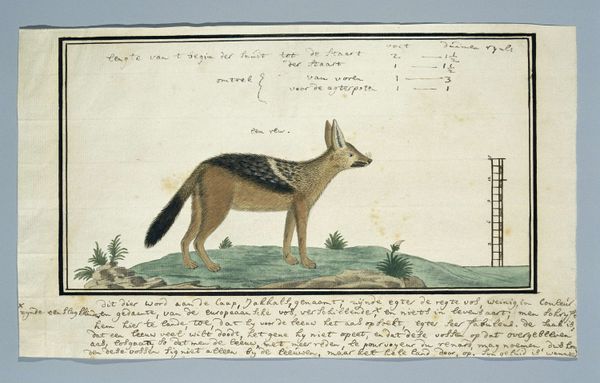
drawing, watercolor
#
portrait
#
drawing
#
landscape
#
watercolor
#
coloured pencil
#
naturalism
#
watercolor
Dimensions: height 660 mm, width 480 mm, height 232 mm, width 365 mm, height 163 mm, width 332 mm
Copyright: Rijks Museum: Open Domain
Curator: Look at this delicate drawing titled “Raphicerus campestris (Steenbok)” by Robert Jacob Gordon, likely created sometime between 1777 and 1786. It depicts two steenboks side-by-side, rendered in watercolor and colored pencil. Editor: My immediate reaction is one of serenity. The soft watercolor palette, the animals' graceful posture—there's a palpable quietude, a sense of undisturbed nature, even with the scientific framing. Curator: It's interesting you pick up on that. Gordon was a Dutch explorer and naturalist, and these drawings served as scientific records. We see an effort toward precision: measurements marked along the side of the buck, detailed anatomical rendering, all of which suggests meticulous observation. Consider, though, how this labor also connects to the colonial project of claiming and cataloging the natural world. Editor: Absolutely, the act of documentation always carries ideological weight. The choice to depict two distinct genders of steenbok also carries implications. There is something profoundly symbolic in presenting these creatures in this particular, very classical profile; their alert ears remind me of sentinels guarding cultural narratives long forgotten in the Cape. Curator: The choice of materials itself informs our understanding, too. Watercolor on paper allowed for portability, for fieldwork, literally making this "fieldwork". And think about who had access to such materials, the skills to wield them. Editor: You make a strong point about accessibility and knowledge. The use of color is also remarkable – notice the subtle earthy tones which give way to stark white underside of the belly, reflecting perhaps purity, new beginnings but also vulnerability in this context. What did "naturalism" mean at a time, what ideals of untamed land? Curator: Perhaps "untamed" only relative to the controlled gardens and manufactured landscapes back in Europe. This watercolor is itself a product, isn't it? The product of exploration, exploitation, and artistic labor meant for specific consumption. Editor: Right, an object steeped in its time, place, and perspective. I will walk away from this imagining who may have viewed this, at the time, and after and ponder their different interpretation over history. Curator: Thinking about how it all links is key for understanding its ongoing influence and why we revisit it now.
Comments
No comments
Be the first to comment and join the conversation on the ultimate creative platform.

